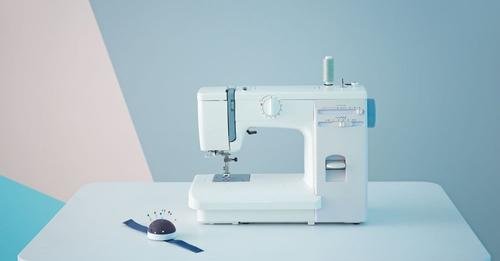Sewing machines are indispensable tools in the world of textiles, offering a wide range of functions to suit different sewing needs. From basic models suitable for beginners to advanced machines catering to professional seamstresses, there are numerous types of sewing machines available on the market. In this blog post, we’ll explore some of the most important types of sewing machines, highlighting their features, applications, and advantages.
- Mechanical Sewing Machines: Mechanical sewing machines are the most traditional type, operated manually using a foot pedal or hand crank. While they lack the advanced features of electronic or computerized models, mechanical machines are simple, durable, and reliable, making them ideal for beginners and occasional sewers. They offer basic stitch options such as straight stitch and zigzag stitch, making them suitable for a wide range of sewing projects.
- Electronic Sewing Machines: Electronic sewing machines are equipped with electronic components that provide added functionality and convenience. Unlike mechanical machines, electronic models feature motorized controls for stitch selection, speed adjustment, and automatic needle threading. They offer a broader range of stitch options, including decorative and utility stitches, as well as built-in features such as one-step buttonholes and adjustable stitch length and width. Electronic sewing machines are suitable for intermediate to advanced sewers who require more versatility and precision in their projects.
- Computerized Sewing Machines: Computerized sewing machines represent the pinnacle of sewing technology, incorporating advanced computer systems to control stitching and embroidery functions. These machines feature LCD screens or touch panels for intuitive navigation and programming of stitch patterns, fonts, and designs. Computerized models offer an extensive selection of built-in stitches, embroidery designs, and alphanumeric fonts, allowing for intricate customization and personalization. They are favored by experienced sewers and professional embroiderers for their precision, speed, and versatility.
- Overlock Sewing Machines (Serger Machines): Overlock sewing machines, also known as sergers, are specialized machines designed for finishing raw edges and sewing seams simultaneously. They utilize multiple threads to create neat, professional-looking seams that prevent fraying and unraveling. Sergers are essential for sewing knit fabrics and creating garments with stretch, such as T-shirts and activewear. They offer functions such as differential feed for handling different fabric types, rolled hemming for decorative edges, and flatlock stitching for joining seams without bulk. While sergers are not suitable for all sewing tasks, they are indispensable tools for achieving professional-quality finishes.
- Embroidery Sewing Machines: Embroidery sewing machines are specifically designed for embellishing fabrics with intricate designs and patterns. They feature built-in embroidery units or attachments that allow users to create beautiful embroidered motifs, monograms, and decorative stitches. Embroidery machines are equipped with hoop systems for securing fabric and precise positioning of designs. They offer a wide range of embroidery styles, stitch densities, and thread colors, enabling users to customize and personalize their projects with ease. Embroidery sewing machines are popular among hobbyists, crafters, and small business owners seeking to add unique embellishments to garments, accessories, and home decor items.
- Quilting Sewing Machines: Quilting sewing machines are optimized for quilting and patchwork projects, offering features that facilitate precise stitching and quilting techniques. They typically have extended workspaces and specialized presser feet for handling large quilts and multiple layers of fabric. Quilting machines may also feature adjustable feed dogs, walking feet, and needle positioning for smooth and accurate stitching. Some models come with built-in quilting stitches and embroidery designs, while others are compatible with quilting software and accessories for creating intricate quilt patterns. Quilting sewing machines are essential tools for quilters of all skill levels, from beginners to seasoned professionals.
- Industrial Sewing Machines: Industrial sewing machines are heavy-duty machines designed for high-volume production and commercial use. They are built to withstand continuous use and offer fast stitching speeds, making them suitable for manufacturing garments, upholstery, leather goods, and other heavy-duty textiles. Industrial machines come in various configurations, including single-needle, double-needle, and multi-needle models, each tailored to specific sewing tasks. They are equipped with powerful motors, sturdy frames, and precision mechanisms for consistent and reliable performance in industrial settings. While industrial sewing machines are not typically used for home sewing, they are essential for businesses and manufacturers seeking to streamline production and maximize efficiency.
In conclusion, the world of sewing machines is vast and diverse, offering a myriad of options to suit different sewing needs and preferences. Whether you’re a beginner learning the basics or an experienced professional pushing the boundaries of creativity, there’s a sewing machine out there for you. By understanding the various types of sewing machines and their unique features, you can choose the right tool to unleash your creativity and bring your sewing projects to life.



